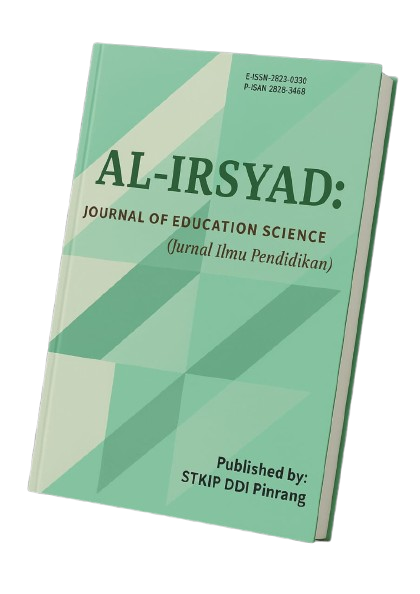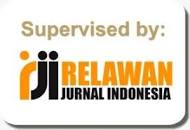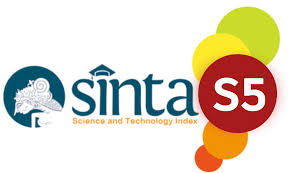THEORY CONSTRUCTION AND IMPLEMENTATION OF DIGITALLY-BASED LEARNING IN ISLAMIC RELIGIOUS EDUCATION
DOI:
https://doi.org/10.58917/aijes.v4i2.155Kata Kunci:
Digitally-Based Learning, Islamic Religious Education, Theory ConstructionAbstrak
The theoretical construction and concept of digital based Islamic Education (PAI) learning are based on the integration of modern learning theories and the utilization of digital technology in the educational process. This approach is grounded in constructivist theory, which emphasizes the active role of students in building understanding through interaction with digital learning resources, and connectivist theory, which highlights the importance of connectivity in digital environments to enhance access and collaboration in learning. The implementation of digital-based PAI learning involves various media such as e-learning, interactive applications, and online platforms that support both independent and collaborative learning. This aims to enhance the effectiveness of material delivery, strengthen the understanding of Islamic values, and align teaching methods with technological advancements and the characteristics of students in the digital era.
Referensi
Adi, I. S. M. A., PUTRI, A. M. J., & SARDI, A. (2024). Examining University Students' Business English Writing Performance: Frequent Errors and Pitfalls. Research and Innovation in Applied Linguistics [RIAL], 2(2), 79-94.
Almarzooq, Z., Lopes, M., & Kochar, A. (2020). Virtual learning during the COVID-19 pandemic: A disruptive technology in graduate medical education. Journal of the American College of Cardiology, 75(20), 2635-2638.
Anderson, T. (2008). The Theory and Practice of Online Learning. Athabasca University Press.
Anderson, T., & Dron, J. (2011). Three generations of distance education pedagogy. The International Review of Research in Open and Distributed Learning, 12(3), 80-97.
Anderson, T., & Dron, J. (2011). Three generations of distance education pedagogy. International Review of Research in Open and Distributed Learning, 12(3), 80-97.
Bergmann, J., & Sams, A. (2012). Flip your classroom: Reach every student in every class every day. International Society for Technology in Education.
Creswell, J. W. (2018). Research design: Qualitative, quantitative, and mixed methods approaches. Sage publications.
Denzin, N. K., & Lincoln, Y. S. (2017). The Sage handbook of qualitative research. Sage.
Gikas, J., & Grant, M. M. (2013). Mobile computing devices in higher education: Student perspectives on learning with cellphones, smartphones & social media. The Internet and Higher Education, 19, 18-26.
Graham, C. R. (2006). Blended learning systems: Definition, current trends, and future directions. In Bonk, C. J., & Graham, C. R. (Eds.), The handbook of blended learning: Global perspectives, local designs (pp. 3-21). Pfeiffer Publishing.
Hamid, A. (2020). Digitalisasi Pendidikan Islam di Era Revolusi Industri 4.0. Jurnal Pendidikan Islam, 15(2), 123-135.
Hosseini, M. (2020). The effect of digital learning on students' motivation and learning outcomes in religious education. Journal of Islamic Studies, 32(2), 145-163.
Humaera, I., Sardi, A., Akbal, F. A., Amir, A. S., Hasyim, R., & Noni, N. (2023). EFL Students' Entrepreneurial Tendencies: Is It a Misdirected Issue?. EduLine: Journal of Education and Learning Innovation, 3(3), 444-453.
Hwang, G. J., Lai, C. L., & Wang, S. Y. (2015). Seamless flipped learning: A mobile technology-enhanced flipped classroom with effective learning strategies. Journal of Computers in Education, 2(4), 449-473.
Jonassen, D. H. (1999). Designing constructivist learning environments. Educational Technology Publications.
Jonassen, D. H. (1999). Designing constructivist learning environments. Educational Technology Publications.
Kemendikbud. (2021). Program digitalisasi sekolah: Meningkatkan akses dan kualitas pendidikan di era digital. Jakarta: Kementerian Pendidikan dan Kebudayaan.
Mayer, R. E. (2017). Multimedia learning. Cambridge University Press.
Miles, M. B., & Huberman, A. M. (1994). Qualitative data analysis: An expanded sourcebook. Sage publications.
Nugroho, A., & Rahayu, D. (2022). Digital parenting and religious education: The role of parents in guiding children in the digital era. Islamic Education Journal, 7(1), 45-60.
Patton, M. Q. (2015). Qualitative research & evaluation methods: Integrating theory and practice. Sage publications.
Prensky, M. (2010). Teaching digital natives: Partnering for real learning. Corwin Press.
Prensky, M. (2010). Teaching Digital Natives: Partnering for Real Learning. Corwin Press.
Rahman, F. (2018). Islamic education and character building: A theoretical approach. International Journal of Islamic Studies, 5(1), 23-38.
Rosyid, F. A., & Wijayanto, A. (2021). Challenges in implementing digital learning in Islamic education: A case study in Indonesia. Journal of Islamic Education Research, 10(2), 87-102.
Sardi, A., Haryanto, A., & Weda, S. (2017). The Distinct types of diction used by the efl teachers in the classroom interaction. International Journal Of Science and Research (IJSR), 6(3), 1061-1066.
Selwyn, N. (2016). Education and technology: Key issues and debates. Bloomsbury Publishing.
Siemens, G. (2005). Connectivism: A learning theory for the digital age. International Journal of Instructional Technology and Distance Learning, 2(1), 3-10.
Siemens, G. (2005). Connectivism: A learning theory for the digital age. International Journal of Instructional Technology and Distance Learning, 2(1), 3-10.
Siemens, G. (2005). Connectivism: A Learning Theory for the Digital Age. International Journal of Instructional Technology and Distance Learning.
Sugiyanto, R. (2021). Model Pembelajaran Blended Learning dalam Pendidikan Agama Islam. Jurnal Pendidikan dan Teknologi, 19(1), 89-102.
Unduhan
Diterbitkan
Cara Mengutip
Terbitan
Bagian
Lisensi
Hak Cipta (c) 2025 Maswati Maswati, Ishak Ishak, Baharuddin Baharuddin, Abdul Halik

Artikel ini berlisensi Creative Commons Attribution 4.0 International License.























